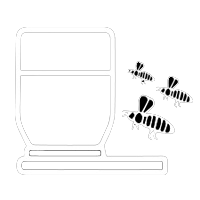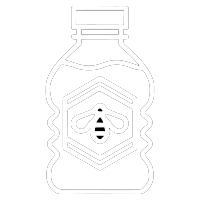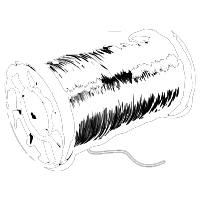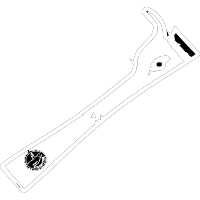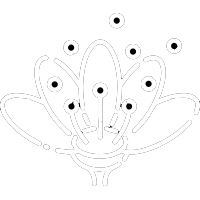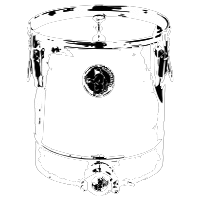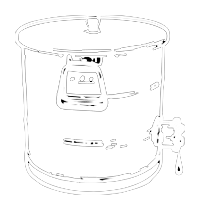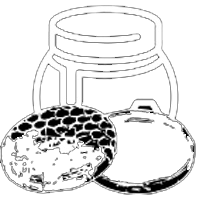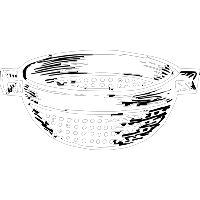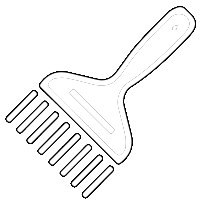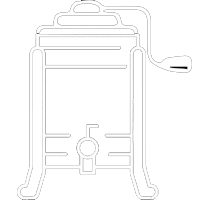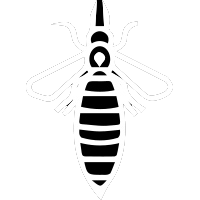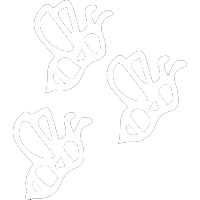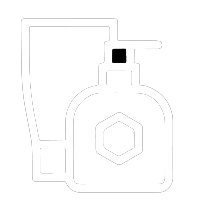Honey bee communication
Honey bees have many ways of communicating with each other.
This is necessary ijecause the safety and viability of the colony depends on the
whole community working together. Most of the colony management is done
collectively by the workers that, through a number of simple mechanisms, can
recruit each other to perform tasks.
Most of the communication is done using pheromones (chemical messengers produced
by one or a group of bees that influence the behaviour of other bees) but they
also perform dances and share food to signal the location of a specific source
of food. Dances are also performed to give fellow workers information, such as
the time to swarm. These mechanisms have developed to be very effective and
ensure the stability of the colony.
The queen plays a strong role in maintaining stability in the hive. She produces
pheromones that let workers know she is present. In addition her pheromones
prevent the workers' ovaries from developing fully and thus inhibit them from
laying eggs. Even the brood (larvae and pupae) produces pheromones that help
maintain the stability of the colony. The brood still requires feeding; the nest
must be kept warm and nectar still needs processing into honey.
The pheromones work as a sophisticated control system that
ensures that while there is a queen and brood the workers will get on with their
normal duties of caring for the colony and providing food. The pheromone control
system further ensures that there is a balance between young 'house' workers and
older 'forager' workers. Research has shown that if all the forager bees are
removed from a colony then the house bees will develop much faster in order to
become foragers. Similarly, if all the house bees are removed, then some of the
foragers will regress and become house bees.
The table on page 26 lists some of the more prominent pheromones produced by
bees in a colony but there are many more. Most pheromones are a mixture of
volatile and oily chemicals. The volatile ones have an immediate effect on the
colony whereas oily ones seem to have a long-term effect. Our understanding of
pheromones and their detailed chemical make-up is not complete. It is clear that
bees have very sensitive 'smell' and 'taste' organs on their antennae (more
sensitive than a dog's sense of smell) and each pheromone may have a number of
different effects depending on the circumstances in which it is deployed.
One important effect is that the specific mix of pheromones, combined with the
state of the hive and the food that has been collected, gives each colony a
distinctive odour that is transferred to the occupants. This 'hive odour' allows
bees to recognise their own colony and guard bees to recognise their colleagues.
It is just part of the range of information that guard bees use to recognise
intruders that may be trying to rob honey or attack the colony.
Excerpt from the book: The bbka guide to beekeeping




